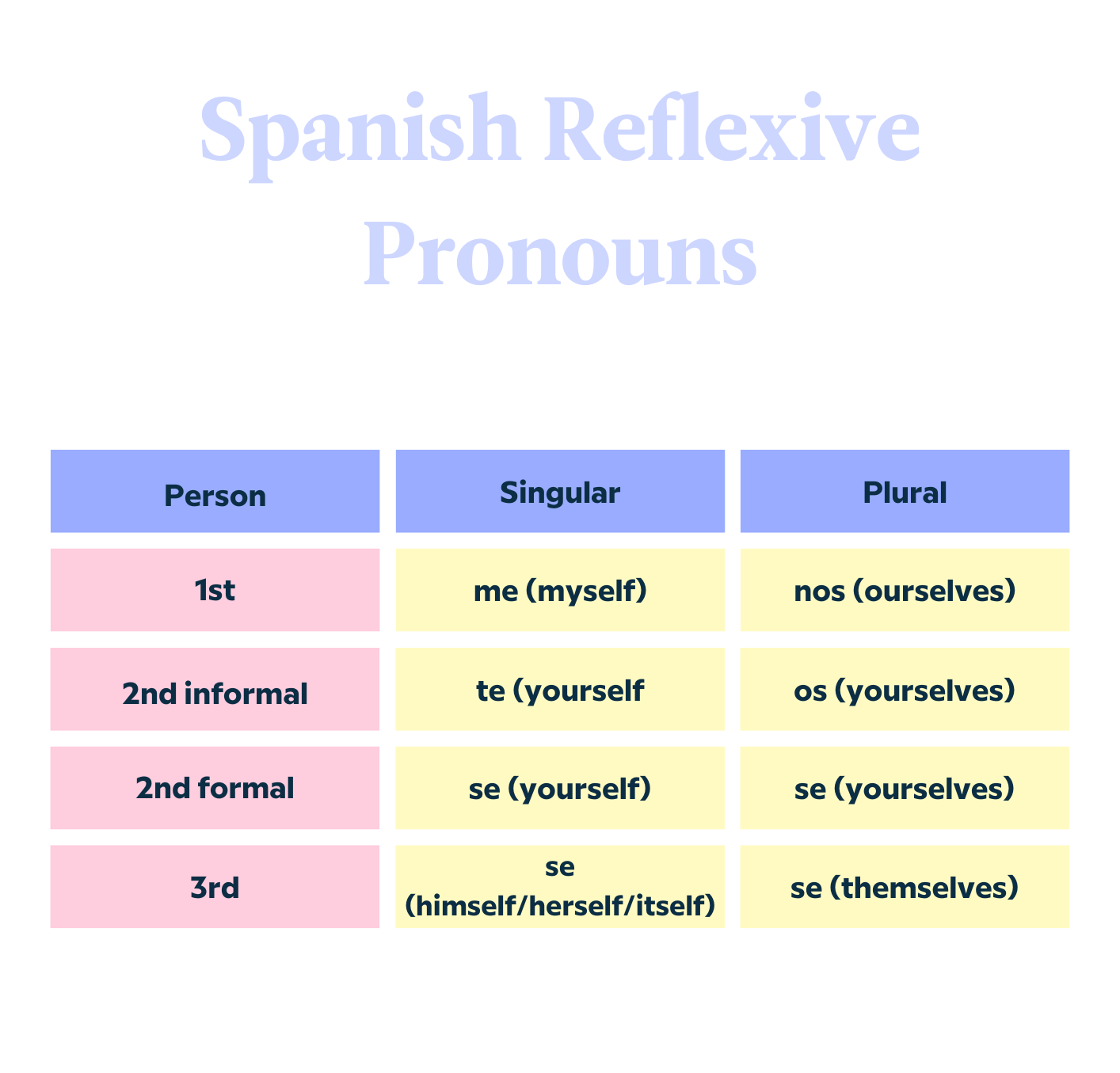When learning Spanish, few grammatical elements are as distinctive and important as reflexive pronouns. These small but mighty words are crucial for describing daily routines, emotions, and countless common expressions. Yet many learners find themselves confused about when and how to use them correctly. Let’s explore everything you need to know about Spanish reflexive pronouns, from basic usage to common pitfalls.
What Are Reflexive Pronouns?
Reflexive pronouns in Spanish indicate that the subject of a sentence is performing an action on itself. In other words, the subject and object are the same person or thing. These pronouns always accompany reflexive verbs and match the subject in person and number.

When to Use Reflexive Pronouns
- Daily routines and personal care
Many actions related to personal care or daily routines are expressed with reflexive verbs in Spanish:
Lavarse (to wash oneself)
Peinarse (to comb one’s hair)
Vestirse (to get dressed)
Acostarse (to go to bed)
For example: Me lavo las manos antes de comer (I wash my hands before eating). - Emotional or psychological states
Reflexive verbs often express emotional changes:
Enojarse (to get angry)
Alegrarse (to become happy)
Preocuparse (to worry)
For example: Se preocupa demasiado por el examen (He/she worries too much about the exam). - Reciprocal actions
When people perform actions on each other:
Conocerse (to meet each other)
Amarse (to love each other)
Escribirse (to write to each other)
For example: Nos vemos mañana (We’ll see each other tomorrow).
Placement Rules
- With conjugated verbs:
Reflexive pronouns typically go before the conjugated verb:
Me baño por la mañana (I shower in the morning). - With infinitives:
They can either be attached to the end of the infinitive or placed before the main verb:
Quiero bañarme or Me quiero bañar (I want to shower). - With present participles:
Similarly, they can be attached to the end or placed before the main verb:
Estoy bañándome or Me estoy bañando (I am showering). - With affirmative commands:
They must be attached to the end of the command:
¡Lávate las manos! (Wash your hands!) - With negative commands:
They go between the negative word and the verb:
No te laves el pelo hoy (Don’t wash your hair today).
Common Mistakes with Spanish Reflexive Pronouns
- Forgetting reflexive pronouns with inherently reflexive verbs
Some verbs in Spanish are almost always reflexive, unlike their English counterparts:
Quejarse (to complain)
Arrepentirse (to regret)
Darse cuenta (to realize)
Incorrect: Quejo de la comida
Correct: Me quejo de la comida (I complain about the food) - Using reflexive pronouns when they’re not needed
Not all actions related to body parts need reflexive pronouns:
Abrí los ojos (I opened my eyes) – No reflexive needed
Me lavé las manos (I washed my hands) – Reflexive needed - Confusion with reciprocal meanings
Sometimes learners mix up reflexive and reciprocal meanings:
Se miran could mean “they look at themselves” (reflexive) or “they look at each other” (reciprocal)
Reflexive pronouns are an integral part of Spanish grammar that allow you to express many everyday actions and states. By understanding when to use them, where to place them, and practicing regularly, you’ll significantly improve your Spanish fluency and sound more like a native speaker. ¡Buena suerte with your Spanish learning journey!
This article was created with the assistance of AI.
Comment